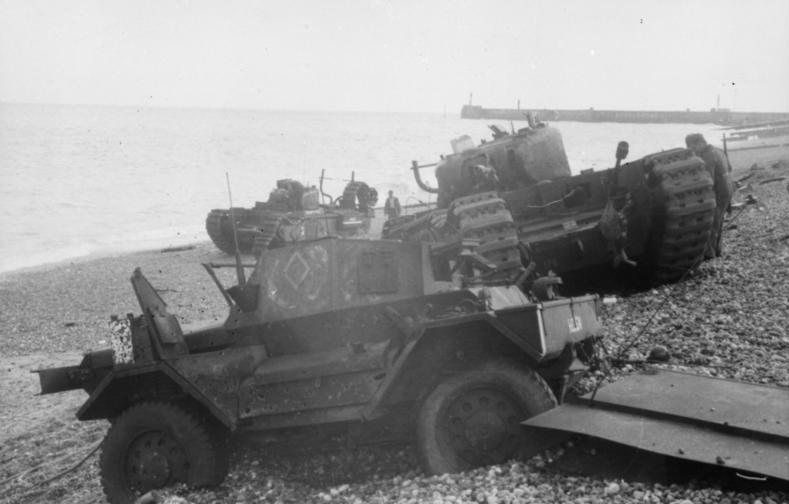|
|
|
|
|
The Oke was a
Churchill II tank armed with a flamethrower.1 After Bull landed first in deep water, the boat reversed, damaging the ramp and doors in the process. Approaching shore again, a shell destroyed the wheelhouse, killing the crew of the landing craft. Boar, the second vehicle on the landing craft, was forced to exit without a ramp, ten minutes later, causing its own rough landing. Third off the Tank Landing Craft was Beetle, which started up but refused to move forward. The crew reversed, crushing two wounded men. The left track chock had been left in place, the men responsible for removing it probably having been hit. Beetle also made a hard landing from the rampless craft, blowing out the lighting system and having to run on its emergency system. Following a general radio transmission that there was a place to cross the sea-wall near the Casino, the tank's commander, Lieutenant Gordon Drysdale, ordered a turn which broke the right track because of a build up of chert rocks in the track. The tank remained in place as a pillbox, firing at muzzle flashes from the west headland and sheltering dismounted tank crews, including Drysdale himself, who tried to engage targets with a Bren gun, drawing heavy return fire from machine guns and mortars in response.3 There does not appear to be any record of the flame equipment having actually been employed at Dieppe.
Canada operated several other flame vehicles subsequent, including the Wasp variant of the Universal Carrier and later the Badger. The Oke concept was followed in the British Army by the Crocodile, a very successful flame tank based on the Mark VII Churchill and employed extensively by the British Army in Italy and North-West Europe, including on occasion in support of Canadian operations.
|
© canadiansoldiers.com 1999-present


